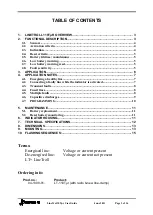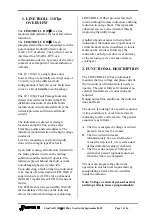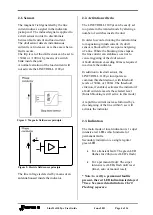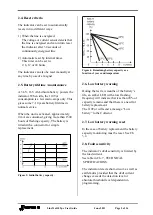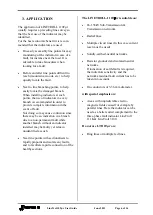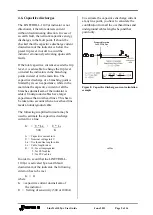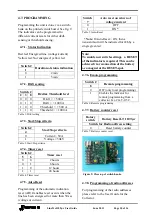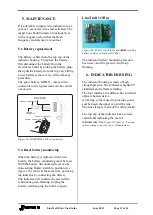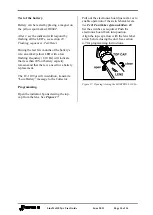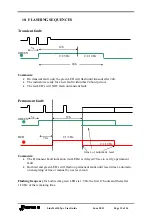
LineTro110Tµr User Guide
June 2011 Page 9 of 16
4.6.
Capacitive discharges
The LINETROLL-110T
r indicator is not
directional, it therefore detects current
without discriminating direction. In case of
an earth fault, the network capacitive energy
discharges in the fault point. It should be
checked that the capacitive discharge current
downstream of the indicator is below the
preset trip level in order to avoid the
indicator erroneously activating upon earth
faults.
If the total capacitive current exceeds the trip
level, it is advisable to change the trip level
or install the indicators in the branching
points instead of in the main line. The
capacitive discharge of a branching point is
limited by its own capacitance, while in the
main line the capacitive current of all the
branches downstream of the indicator is
added. Underground cables have larger
capacitance than overhead lines. This has to
be taken into account when an overhead line
feeds an underground cable.
The following simplified formula may be
used to estimate the capacitive discharge
current for a line:
Ic = U * La + U * Lc
300 K
Ic = Capacitive current in A
U = Nominal voltage in kV
La = Overhead line length in km
Lc = Cable length in km
K = 10; for oil impregnated
cables
5; for PEX cables
3; for PVC cables
In order to avoid that the LINETROLL-
110T
r is activated by an earth fault
downstream of the indicator, the following
criterion has to be met.
Ic < It
where
Ic = capacitive current downstream of
the indicator.
It = Setting of sensitivity (500 or 1000A)
To estimate the capacitive discharge current
at any line point, you have to calculate the
contribution from all the overhead lines and
underground cables lengths beyond that
point only.
Figure 8: Capacitive discharge current calculation
example
Proposed location
for LT 110Tµr


